モニット は無料のオープンソースであり、自動的に監視および管理する非常に便利なツールです。 プロセス、 ファイル、 ディレクトリ、 チェックサム、 権限、 ファイルシステム、 とのようなサービス アパッチ、 Nginx、 MySQL、 FTP、 SSH、 SMTP、など UNIX / Linux ベースのシステムであり、システム管理者に優れた便利な監視機能を提供します。
monitにはユーザーフレンドリーなWebインターフェイスがあり、ネイティブHTTP(S)Webサーバーまたはコマンドラインインターフェイスを使用して、システムステータスを直接表示し、プロセスをセットアップできます。 つまり、次のようなWebサーバーが必要です。 アパッチ また Nginx システムにインストールして、monitWebインターフェイスにアクセスして表示します。
[ You might also like: 20 Command Line Tools to Monitor Linux Performance ]
Monitでできること
Monitには、実行されていない場合はプロセスを開始し、応答しない場合はプロセスを再開し、高リソースを使用している場合はプロセスを停止する機能があります。 さらに、Monitを使用して監視することもできます ファイル、 ディレクトリ、 と 変更のためのファイルシステム、 チェックサムの変更、 ファイルサイズの変更、 また タイムスタンプの変更。
と モニット、 リモートホストを監視できます TCP / IP ポート、 サーバープロトコル、 と ping。 Monitは、独自のログファイルを保持し、重大なエラー状態と回復ステータスについて警告します。
この記事は、に関する簡単なガイドを説明するために書かれています。 モニット RHELベースおよびDebianベースのLinuxディストリビューションへのインストールと構成。
ステップ1:LinuxにMonitをインストールする
デフォルトでは、 モニット 監視プログラムはデフォルトのシステムベースリポジトリからは利用できません。サードパーティのepelリポジトリを追加して有効にして、 モニット 次のようなRHELベースのディストリビューションでのパッケージ CentOS、 Rocky Linux、 と AlmaLinux。
--------- On RHEL 9 based Systems --------- # dnf install https://dl.fedoraproject.org/pub/epel/epel-release-latest-9.noarch.rpm --------- On RHEL 8 based Systems --------- # dnf install https://dl.fedoraproject.org/pub/epel/epel-release-latest-8.noarch.rpm --------- On RHEL 7 based Systems --------- # yum install https://dl.fedoraproject.org/pub/epel/epel-release-latest-8.noarch.rpm
epelリポジトリを追加したら、 モニット 次のyumコマンドを実行してパッケージ化します。
# yum install monit OR # dnf install monit [On Fedora Linux]
為に Ubuntu / Debian / Linux Mint 図のように、ユーザーはaptコマンドを使用して簡単にインストールできます。
$ sudo apt install monit
ステップ2:LinuxでMonitを構成する
モニット 構成は非常に簡単です。実際、構成ファイルは非常に読みやすく、ユーザーが理解しやすいように作成されています。 実行中のサービスを2分ごとに監視するように設計されており、ログを「/ var / log / monit「。
モニット ポートで実行されるWebインターフェイスがあります 2812 Webサーバーを使用します。 Webインターフェースを有効にするには、monit構成ファイルを変更する必要があります。
にあるmonitのメイン設定ファイル /etc/monit.conf 下 (RedHat / CentOS / Fedora) と / etc / monit / monitrc (のファイルUbuntu / Debian / Linux Mint)。
選択したエディターを使用してこのファイルを開きます。
# vi /etc/monitrc Or $ sudo nano /etc/monit/monitrc
次に、次のセクションのコメントを解除して、サーバーのIPアドレスまたはドメイン名を追加し、誰でも接続してmonitユーザーとパスワードを変更できるようにします。または、デフォルトのものを使用することもできます。
set httpd port 2812 and
use address 0.0.0.0 # only accept connections from localhost
allow 0.0.0.0/0 # allow localhost to connect to the server and
allow admin:monit # require user 'admin' with password 'monit'
allow @monit # allow users of group 'monit' to connect (rw)
allow @users readonly # allow users of group 'users' to connect readonly
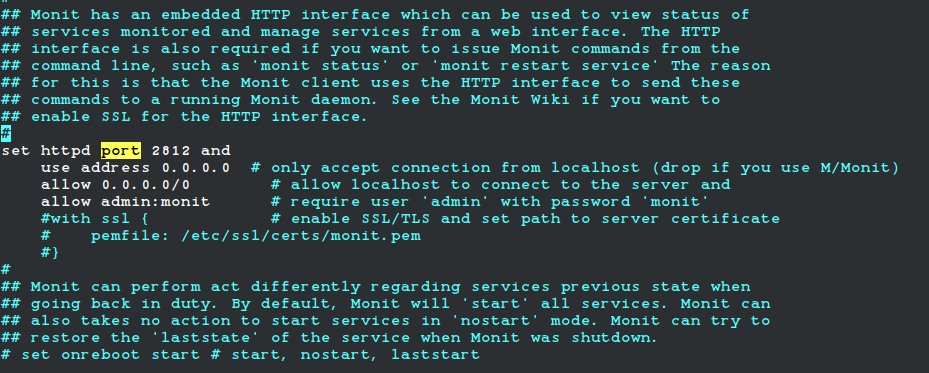
構成したら、開始、有効化、および検証する必要があります モニット 新しい構成設定を再ロードするサービス。
# systemctl start monit # systemctl enable monit # systemctl status monit
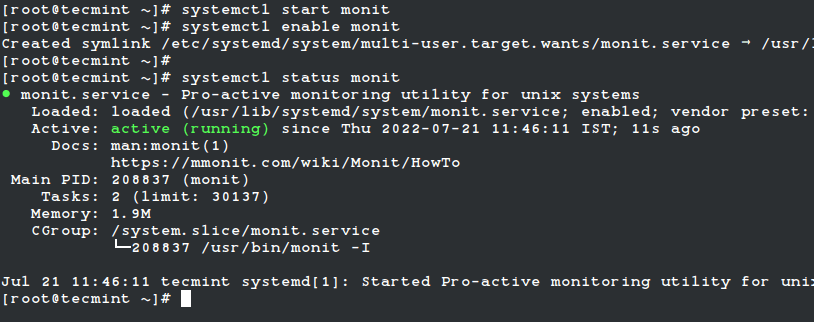
これで、次のURLに移動して、monitWebインターフェイスにアクセスできるようになります。
http://localhost:2812 OR http://ip-address:2812 Or http://example.com:2812
次に、ユーザー名を「管理者」と「」としてのパスワードモニット「。 次のような画面が表示されます。
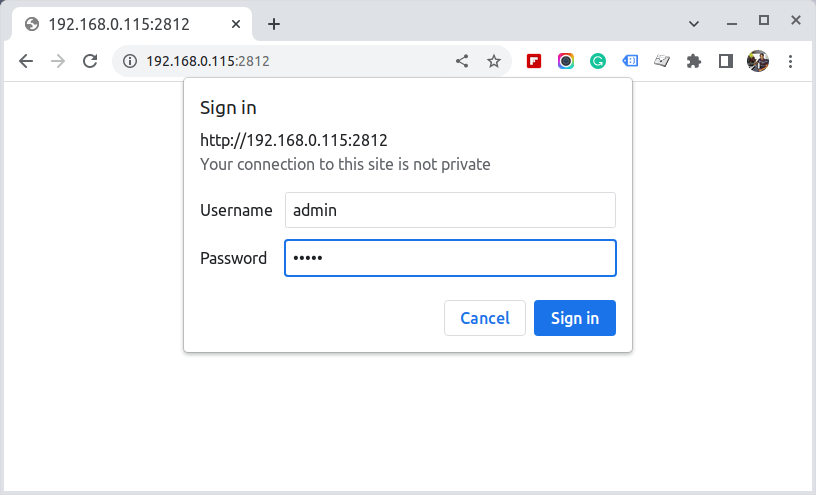
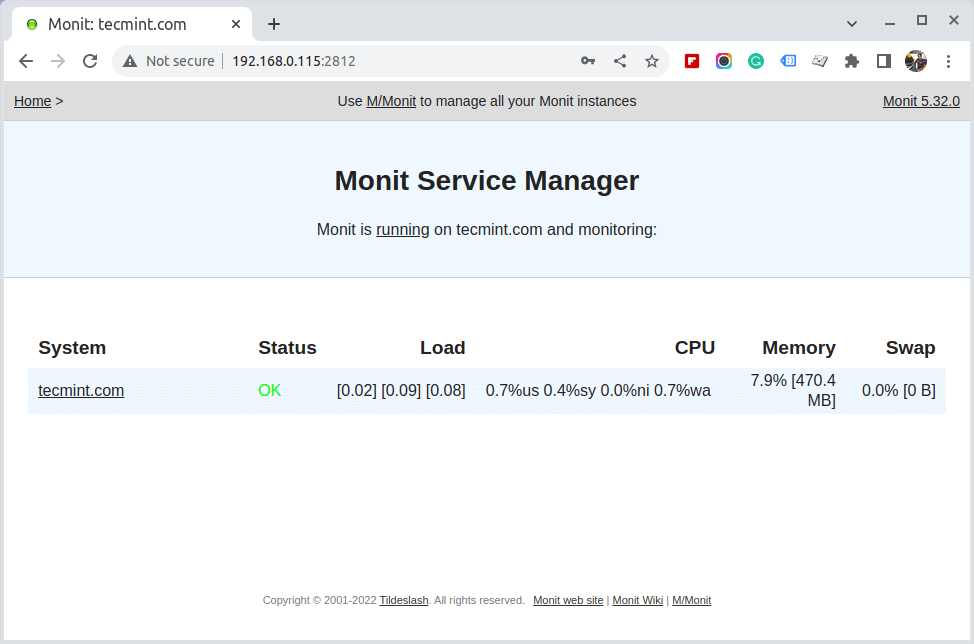
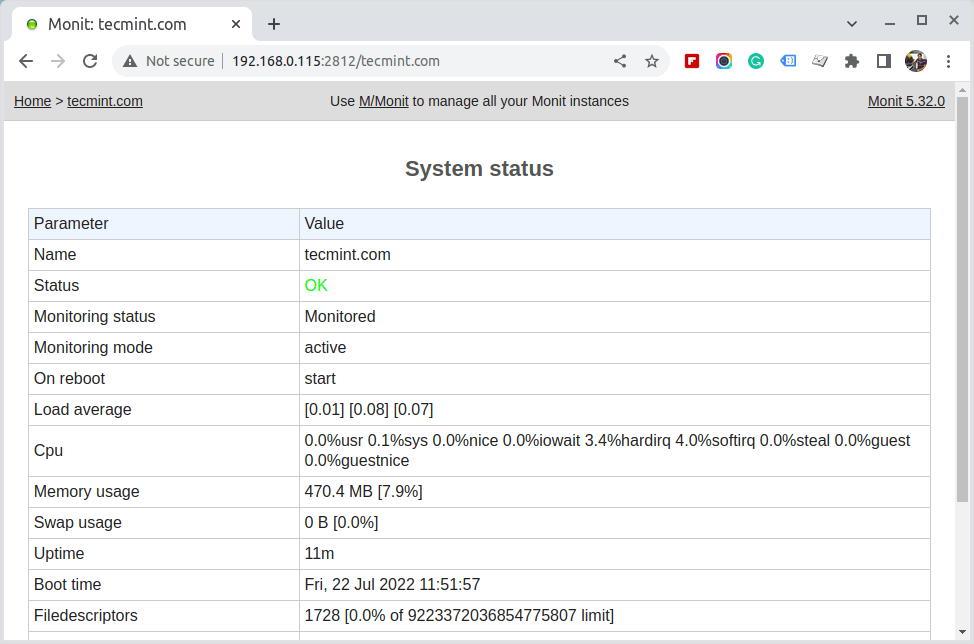
ステップ3:LinuxサービスをMonitMonitoringに追加する
一度 モニット Webインターフェイスが正しく設定されている場合は、監視するプログラムをに追加し始めます。 / etc / monitrc 下 (RedHat / CentOS / Fedora) と / etc / monit / monitrc (のファイルUbuntu / Debian / Linux Mint)下部にあります。
以下は、monitのいくつかの便利な構成例です。これは、サービスがどのように実行されているか、プロファイルを保持する場所、サービスを開始および停止する方法などを確認するのに非常に役立ちます。
MonitでApacheを監視する
check process httpd with pidfile /var/run/httpd.pid group apache start program = "/usr/bin/systemctl httpd start" stop program = "/usr/bin/systemctl httpd stop" if failed host 127.0.0.1 port 80 protocol http then restart if 5 restarts within 5 cycles then timeout
MonitでApache2を監視する
check process apache with pidfile /run/apache2.pid start program = "/usr/bin/systemctl apache2 start" with timeout 60 seconds stop program = "/usr/bin/systemctl apache2 stop"
MonitでNginxを監視する
check process nginx with pidfile /var/run/nginx.pid start program = "/usr/bin/systemctl nginx start" stop program = "/usr/bin/systemctl nginx stop"
MonitでMySQLを監視する
check process mysqld with pidfile /var/run/mysqld/mysqld.pid group mysql start program = "/usr/bin/systemctl mysqld start" stop program = "/usr/bin/systemctl mysqld stop" if failed host 127.0.0.1 port 3306 then restart if 5 restarts within 5 cycles then timeout
MonitでSSHを監視する
check process sshd with pidfile /var/run/sshd.pid start program "/usr/bin/systemctl sshd start" stop program "/usr/bin/systemctl sshd stop" if failed host 127.0.0.1 port 22 protocol ssh then restart if 5 restarts within 5 cycles then timeout
監視用にすべてのプログラムを構成したら、monit構文でエラーを確認します。 エラーが見つかった場合、それらを修正します。何が問題だったのかを理解するのはそれほど難しくありません。 「制御ファイルの構文OK「または、エラーが表示されない場合は、先に進むことができます。
# monit -t Or $ sudo monit -t
考えられるすべてのエラーを修正したら、次のコマンドを入力してmonitサービスを開始できます。
# systemctl monit restart OR $ sudo systemctl monit restart
これは、監視用のすべてのLinuxサービスを追加した後の監視方法です。
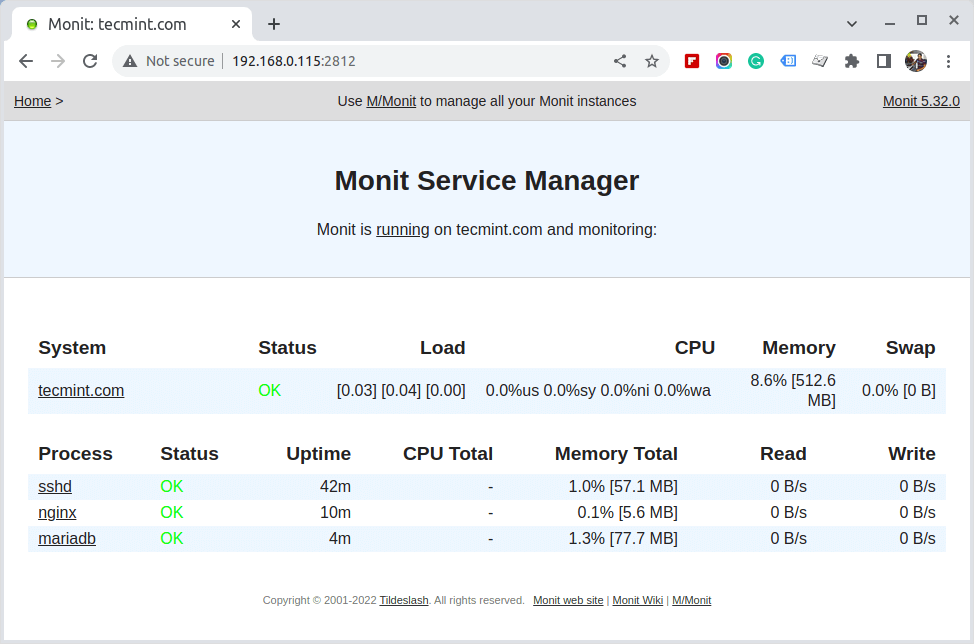
ここでTecMintで行っていることを理解する場合は、次のことを検討する必要があります。
TecMintは、Web上のあらゆる種類のLinux記事、ガイド、および書籍で最も急速に成長し、最も信頼されているコミュニティサイトです。 何百万人もの人々がTecMintを訪れます! すべての人が無料で利用できる何千もの公開記事を検索または閲覧します。
あなたが読んでいるものが好きなら、感謝の印として私たちにコーヒー(または2)を買うことを検討してください。
終わりのないサポートに感謝します。
。
The post Linuxシステムを管理および監視するためのツール appeared first on Gamingsym Japan.

